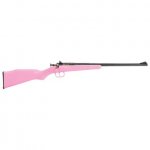The two chronographs I have used both displayed one sigma along with the other data. Many on forums talk about the SD recorded for various loads.
This puzzles me as to why that info is not ignored for ES which would seem more useful.
What value is SD in our thrashing around in velocities?
While working in systems engineering doing control work in heavy industry we used SD. However, we used 3 sigma representing 99.7 of all date points. The idea was to expel bogus readings so not to skew valid measurements.
Doesn't seem to fit our load development work with velocities.
Just something that gave me an itch out of reach.
This puzzles me as to why that info is not ignored for ES which would seem more useful.
What value is SD in our thrashing around in velocities?
While working in systems engineering doing control work in heavy industry we used SD. However, we used 3 sigma representing 99.7 of all date points. The idea was to expel bogus readings so not to skew valid measurements.
Doesn't seem to fit our load development work with velocities.
Just something that gave me an itch out of reach.




:max_bytes(150000):strip_icc()/Coefficient-of-Variation-V2-9df0f99589de4c428135b4954ccf972d-4bf1013f340f4a94b3d1472c1ac1f20b.jpg)
